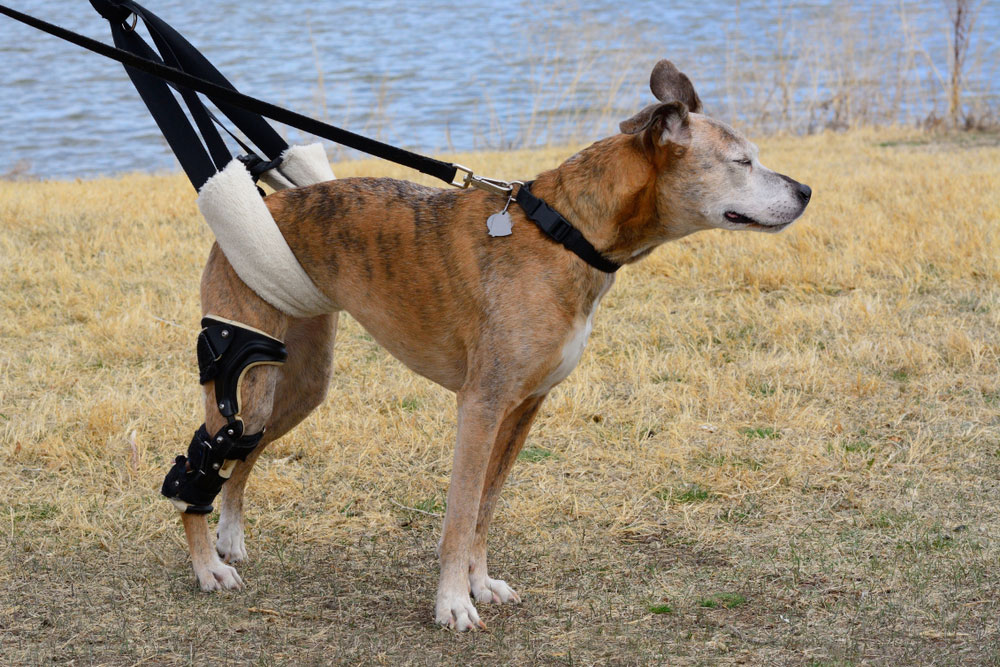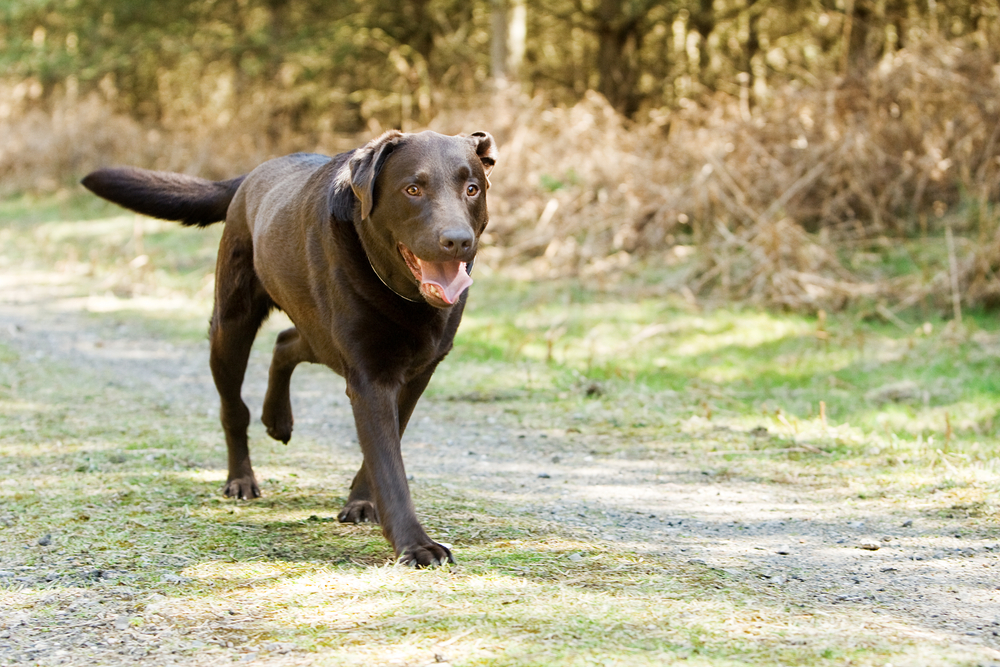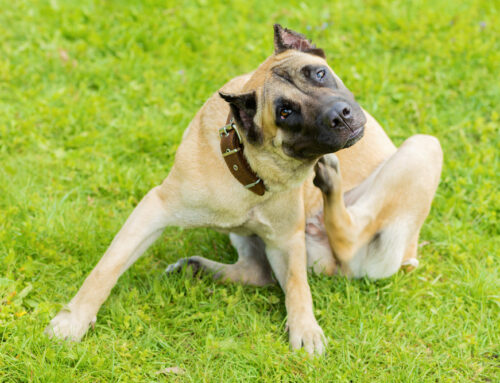Your dog isn’t just your sidekick. They’re your trail buddy, your couch companion, and your source of everyday joy. So when something’s off with their gait, it’s easy to worry. A limp, hesitation to jump, or stiff morning movement might seem small at first, but orthopedic issues in dogs are often more serious than they appear.
At Pinedale Animal Hospital, we’re here to help you get to the root of your dog’s mobility concerns and guide you through treatment options, including orthopedic surgery when needed. Whether your dog is recovering from an injury or showing signs of joint disease, knowing what to expect can help you act quickly and confidently.
Why Mobility Matters
A dog’s ability to move comfortably impacts their quality of life on every level. Painful joints or injuries can affect not just physical ability, but also appetite, sleep, and mood. That’s why orthopedic care isn’t just about fixing broken bones. It’s about preserving the full life your dog deserves.
The Mobility Matters Guide from AAHA is an excellent resource on why early intervention and mobility monitoring are so important, especially as dogs age or recover from injury.
Common Reasons Dogs Limp
Before diving into specific surgeries, it helps to understand what might be causing your dog’s discomfort. The AKC guide to limping outlines some of the most common causes:
- Sprains and soft tissue injuries
- Cruciate ligament tears
- Fractures or dislocations
- Joint conditions like hip dysplasia or patellar luxation
- Infections or bone cancer
Limping is always worth investigating. An exam and imaging at our diagnostics center can help pinpoint the issue and get your pet back on the path to comfort.
Orthopedic Surgeries We Perform
Here are the most common orthopedic surgeries for dogs, what they involve, and how they can restore comfort and mobility.
1. Cruciate Ligament Rupture (ACL Tear)
A torn cranial cruciate ligament destabilizes the knee, often resulting in sudden lameness. This is especially common in active or overweight dogs.
Surgical Options:
We often recommend a Tibial Plateau Leveling Osteotomy (TPLO) or Tibial Tuberosity Advancement (TTA). Learn more about these techniques at TPLO Info.
Recovery:
Most dogs need 8–12 weeks of rest, controlled leash walks, and physical therapy to regain strength and mobility.
2. Hip Dysplasia
This inherited condition causes the hip joint to form improperly, leading to arthritis, pain, and reduced mobility.
Treatment Options Include:
- Weight management and joint supplements
- Femoral Head Ostectomy (FHO)
- Total Hip Replacement (THR)
Surgical planning depends on age, severity, and long-term goals. Learn more from Today’s Veterinary Practice.
3. Patellar Luxation
If your dog “skips” a step or intermittently lifts a hind leg, they may have a luxating patella (slipping kneecap). It’s especially common in small breeds.
When Surgery Helps:
Moderate to severe luxation can lead to arthritis or long-term pain. Corrective surgery realigns the kneecap and stabilizes the joint. Cornell University offers a great breakdown of diagnosis and treatment options.
4. Fracture Repair
Whether from a jump gone wrong or roughhousing gone too far, fractures can occur at any age. Zoetis Petcare and the Pet Health Network provide helpful overviews of fracture care.
| Type of Fracture | Common Treatment |
| Simple fracture | Cast or splint |
| Compound fracture | Internal plates or pins |
| Growth plate injury (puppies) | Surgical stabilization |
We offer a full range of fracture repairs at our surgery center to help your dog heal quickly and correctly.
5. Amputation: When Mobility Means Letting Go
While amputation may sound extreme, it can be the kindest choice when saving a limb isn’t possible- or when keeping it causes more harm than good.
When Amputation May Be Recommended:
- Severe trauma or non-repairable fractures
- Cancerous, aggressive bone diseases like osteosarcoma that risk metastasis or pathologic fracture
- Chronic, unmanageable orthopedic pain
Contrary to common fears, most dogs adapt incredibly well. According to the CSU Animal Cancer Center, dogs with three legs typically return to normal activities after healing- running, playing, and loving life just the same.
Supporting Your Dog’s Recovery
Surgery is just one part of the journey. Healing happens at home, and we’re here to support you with every step.
Recovery Tips:
- Create a safe, confined space with non-slip surfaces
- Limit activity and follow medication instructions
- Use ramps or harnesses to support mobility
- Monitor incision sites daily
- Ask us about laser therapy to reduce pain and promote healing
- Devote time to physical therapy, critical to long-term success of orthopedic injuries
What to Expect at Your Appointment
When you bring your dog in for orthopedic concerns, we’ll typically begin with:
- Full physical exam
- Gait evaluation and limb palpation
- Imaging (like X-rays)- typically with sedation
- Discussion of treatment options
If you have videos of your dog moving at home, bring them along. They’re incredibly helpful.

FAQs About Dog Orthopedic Surgery
How do I know if my dog’s limp is serious?
Persistent limping, swelling, or signs of pain should be examined promptly.
Is surgery the only treatment option?
Not always. We’ll consider all appropriate options and recommend surgery only when it’s the best path forward.
What’s recovery like after orthopedic surgery?
Most dogs require 6–12 weeks of structured rest and gradual rehabilitation. Follow-up exams and activity guidelines are key to long-term success.
Is amputation painful for dogs?
While the healing period involves discomfort, long-term pain is often significantly reduced. Most dogs adjust quickly and thrive with three legs.
We’re Here to Help Your Dog Heal
Orthopedic problems can be daunting- but you don’t have to face them alone. At Pinedale Animal Hospital, we combine surgical skill, personalized care, and a deep commitment to your dog’s well-being. Whether you’re considering a procedure or just noticing a limp, we’re ready to help you navigate the path forward.
Schedule a consultation today to discuss your dog’s mobility, health, and options for care. Let’s get them back to doing what they love.








Leave A Comment